Bernard Corrigan House
Introduction
Text-to-speech Audio
This mansion was built for Bernard Corrigan from 1912 to 1913 and designed by renowned architect Louis S. Curtiss. Corrigan was born in Quebec in 1847 and moved to Kansas City in 1858, where he amassed a fortune as a contractor, street railway tycoon, and real estate speculator. Corrigan also served as the city's police commissioner, with ties to the early days of the city's growing political machine the predated the infamous consolidation of power by Tom Pendergast. The Prairie School estate represents the luxurious residential architecture constructed in one of Kansas City's most exclusive subdivisions. Corrigan died two months before construction finished on the home, and his wife sold the property to Patrick J. White for more than $100,000 (equivalent to more than $3 million in the 2020s). In 1917, White sold the property to brewery mogul and amusement park owner Joseph J. Heim. Shortly after the federal government approved the 18th Amendment prohibiting alcohol, Heim sold the property to lumber magnate Robert Sutherland, who imported and planted 10,000 tulips each year until his death in 1941.
Images
Bernard Corrigan House
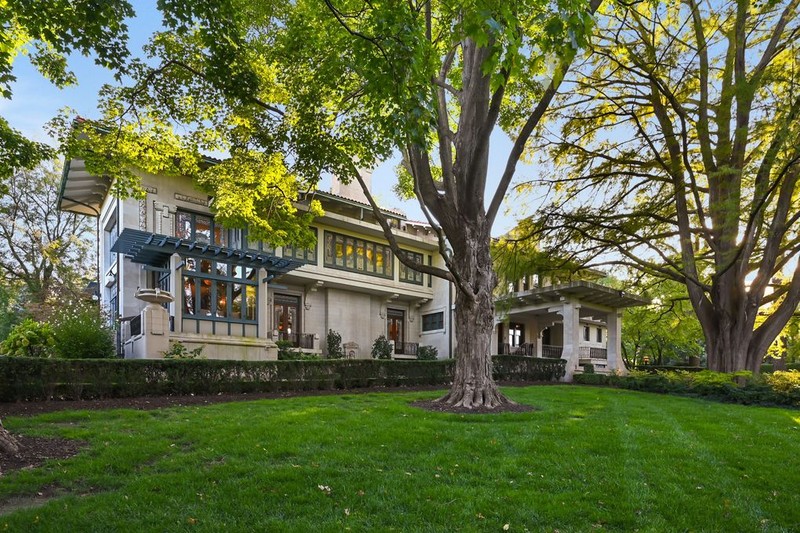
Bernard Corrigan House

Bernard Corrigan House
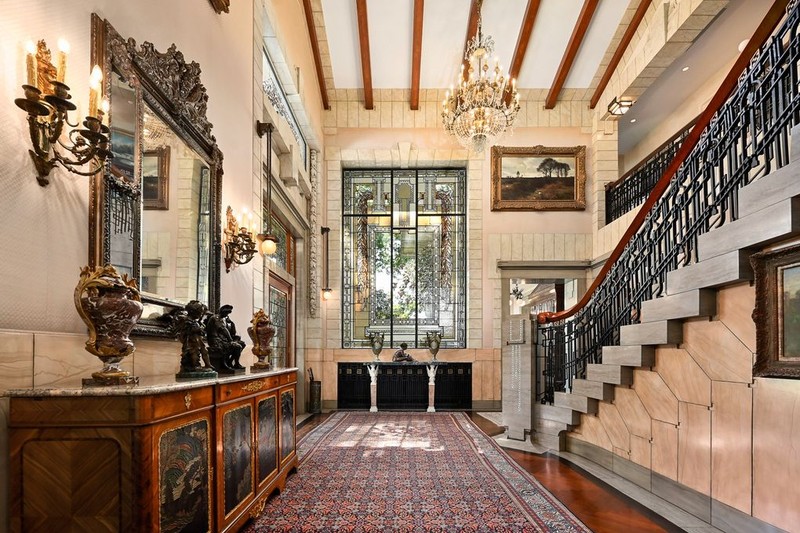
Bernard Corrigan House
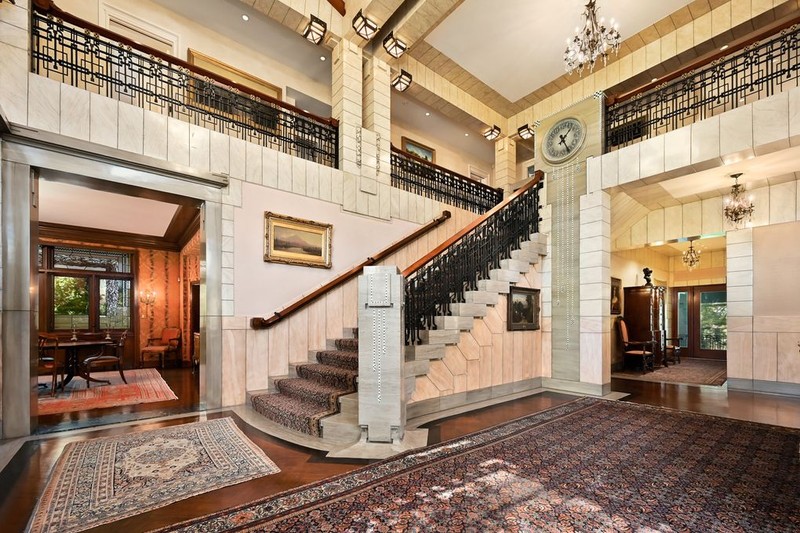
Early 1900s photo of Heim Brewery in Kansas City
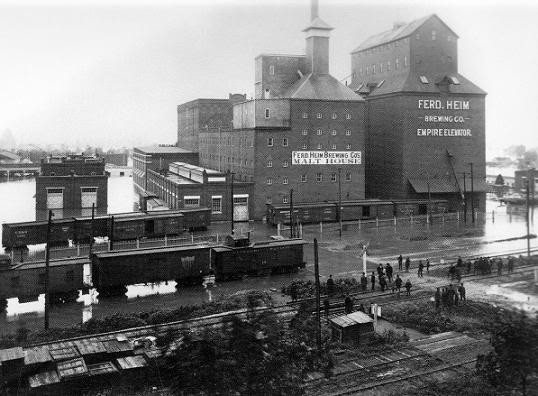
Electric Park at night
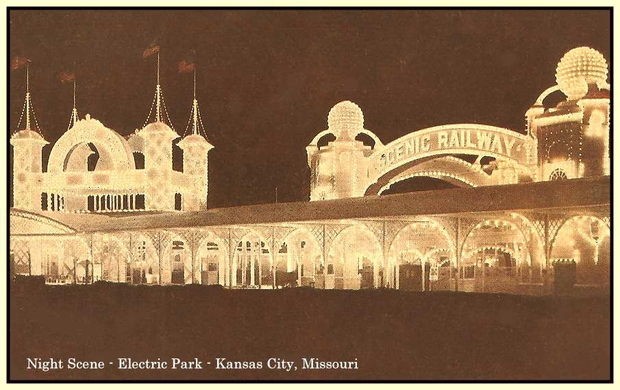
Electric Park postcard

Postcard of Brookside Boulevard in the Country Club District
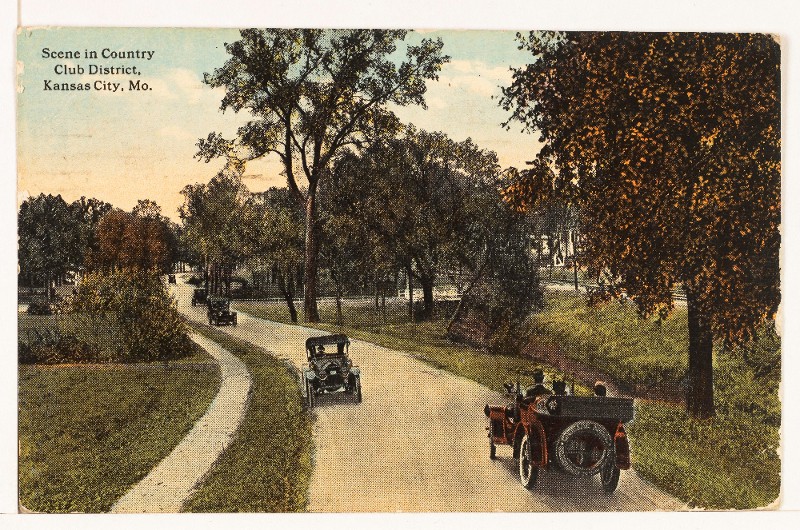
A sign that alludes to the racial and economic restrictions attached to the Country Club District

The use of deed restrictions in subdivision development, 1928
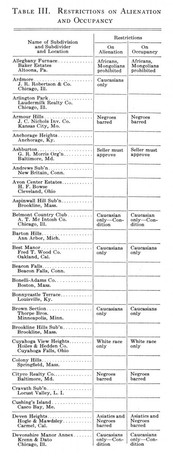
Backstory and Context
Text-to-speech Audio
Corrigan earned millions and became an imposing figure in Kansas City, dominating the city's construction industry, streetcar system, and city government. Corrigan was known for many public fights with Kansas City Star publisher William Rockhill Nelson concerning Kansas City's street railway. Corrigan, one of twelve Irish Canadian brothers and sisters, was born in 1847 and left his Quebec home for Kansas City in 1868. Corrigan and a few of his brothers seized on the construction boom that followed the Civil War. The Corrigans built streets and purchased seven of Kansas City's eight horse-drawn streetcar lines.
With Corrigan serving as a police commissioner, the brothers hired their railway and construction veterans to work in the police department. They also attempted to use their political influence to protect their streetcar monopoly. Nelson responded by writing numerous editorials that helped rally the public against the "Shameless Eight," city council members we accused on attempteding to grant Corrigan a thirty-year city railway franchise. In the years that followed, Corrigan and his family embarked on numerous construction and railway projects that ultimately benefited the city while bringing immense wealth to the owners. The city appointed Corrigan as the Metropolitan Street Railway president in 1902. With the mayor's and city council's support, he attempted to turn the job into an ostensibly lifetime position, but voters decided against it in a December 1909 referendum.
Although Corrigan did not live long enough to enjoy the completion of this home, he commissioned this lavish Prairie School estate that would be home to numerous wealthy Kansas City residents. In 1914, one year after her husband died and this home was completed, his widow sold the house to Patrick White, who sold it three years later (1917) to Joseph J. Heim. Originally from St. Louis, where he worked for his father and uncle's successful brewing business, Heim moved to Kansas City in 1884 and established the Heim Brewing Co., producing 12,000 barrels of beer annually. By 1901, the Heim family owned and operated Kansas City's largest brewery, producing more than 140,000 barrels annually, and operated Electric Park, a popular amusement park near the brewery (opened in 1899). Heim added to his wealth by investing in real estate, banking, street railways, and the telephone industry, which proved a wise investment after prohibition compelled the Heim family to sell their brewery complex in 1920.
After Heim's wife died in 1923, he sold the estate to Robert Sutherland, a wealthy lumber magnate. Unlike his predecessors, Sutherland remained in the estate for a lengthy period, staying in the home until his death in 1941, while his widow continued to live there after he passed away. Sutherland made his fortune by meeting the needs of oil derricks, first offering wood to those digging for oil in Oklahoma and other midwestern communities and then transitioning to steel. He later invested his fortune back into lumber, this time focusing on the needs of consumers and small businesses with "cash-and-carry" lumberyards.
The home, regarded as the masterpiece of highly acclaimed architect Louis S. Curtis, combines Prairie and Art Nouveau architectural styles accentuated with traditional Japanese motifs. Its size and extravagance speak to Corrigan's power and wealth, and its presence alongside numerous other mansions in the Country Club District and along Ward Parkway speaks to the trend of wealthy entrepreneurs moving southward away from the city center to exclusive, racially restricted, suburban-style communities.
J.C. Nichols, a nationally renowned urban planner, designed the Country Club District community. Several of Nichols' residential developments were located south of the city's downtown region, following the movement of wealthy residents in a southerly direction. In 1907, the Nichols Investment Company purchased approximately 1,000 acres of land beyond the city limits that became the Country Club District, named for the nearby Kansas City Country Club. Nichols built suburban infrastructure in the Country Club District, including roads that followed the terrain, cul-de-sacs, buried water and sewer lines, abundant green space, fountains, and other landscaping features. The District also included plenty of strategies, rules, and deed restrictions that prevented (or expressly forbade) people of color from living in the communities.
Cite This Entry
Powers, Mathew and Clio Admin. "Bernard Corrigan House." Clio: Your Guide to History. June 28, 2024. Accessed March 23, 2025. https://theclio.com/tour/2684/10
Sources
Dent, Mark. "The Man Who Made the Suburbs White." Slate.com. August 16, 2023. https://slate.com/business/2023/08/jc-nichols-covenants-segregation-development-zoning.html.
Euston, Diane. "The Heim Brewery Legacy Lives on in Kansas City." Martin City & South KC Telegraph. May 9, 2022. https://martincitytelegraph.com/2022/05/09/the-heim-brewery-legacy-lives-on-in-kansas-city/.
Ford, Susan Jezak. J. C. Nichols: Developer: 1880-1950. Kansas City Public Library. Accessed June 11, 2024. https://kchistory.org/document/biography-j-c-nichols-1880-1950-developer.
Harper, Kimberly. "Louis S. Curtiss." Historic Missourians. Accessed June 11, 2024. https://historicmissourians.shsmo.org/louis-s-curtiss/.
Stevens Sara. "J.C. Nichols and the Country Club District: Suburban Aesthetics and Property Values." The Pendergast Years. Kansas City Public Library. Accessed June 11, 2024. https://pendergastkc.org/articles/jc-nichols-and-country-club-district-suburban-aesthetics-and-property-values.
Wells, Michael. "You used to be able to ride a Ferris wheel & drink beer at this historic KC brewery." Kansas City Star. October 1, 2022. https://www.kansascity.com/news/your-kcq/article266636301.html.
Susan Jezak Ford. Biography of Robert Sutherland, Kansas City Public Library. Accessed June 27th, 2024. https://kchistory.org/document/biography-robert-r-sutherland-jr-1884-1941-lumber-yard-owner.
KC Yesterday via Facebook, https://www.facebook.com/kcyesterday/posts/bernard-corrigan-residence-1200-w-55th-st-built-in-1913-historybernard-corrigan-/3206846042862320/
KC Yesterday via Facebook, https://www.facebook.com/kcyesterday/posts/bernard-corrigan-residence-1200-w-55th-st-built-in-1913-historybernard-corrigan-/3206846042862320/
KC Yesterday via Facebook, https://www.facebook.com/kcyesterday/posts/bernard-corrigan-residence-1200-w-55th-st-built-in-1913-historybernard-corrigan-/3206846042862320/
KC Yesterday via Facebook, https://www.facebook.com/kcyesterday/posts/bernard-corrigan-residence-1200-w-55th-st-built-in-1913-historybernard-corrigan-/3206846042862320/
https://newsantafetrailer.blogspot.com/2018/08/meet-me-in-electric-park_31.html
https://newsantafetrailer.blogspot.com/2018/08/meet-me-in-electric-park_31.html
https://newsantafetrailer.blogspot.com/2018/08/meet-me-in-electric-park_31.html
Courtesy of the Missouri Valley Special Collections at https://pendergastkc.org/articles/jc-nichols-and-country-club-district-suburban-aesthetics-and-property-values
https://slate.com/business/2023/08/jc-nichols-covenants-segregation-development-zoning.html
Helen Monchow, https://pendergastkc.org/articles/jc-nichols-and-country-club-district-suburban-aesthetics-and-property-values

